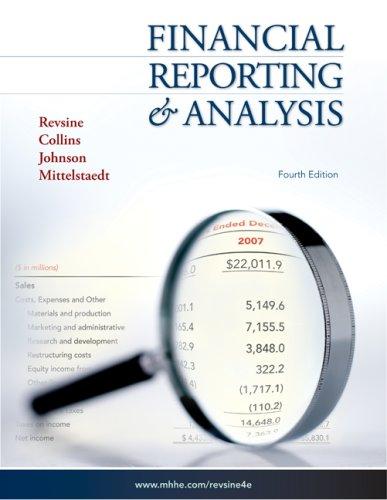Robinson Companys statement of financial position on January 1, 2068, follows: The inventory consisted of 10 units
Question:
Robinson Company’s statement of financial position on January 1, 2068, follows:

The inventory consisted of 10 units acquired at an original cost of \($800\) per unit on November 1, 2007. Robinson owns only a single fixed asset that it purchased new on January 1, 2003 for \($10,000\). The asset has a 10-year life, no salvage value, and experiences a straight-line decline in service potential.
On June 30, 2008, 5 of the 10 inventory units were sold for \($8,600\) cash. Robinson's pricing strategy was based on a target return of 20% on the original cost of the assets sold and/or utilized in operations. Dividends equal to total reported historical cost income were also declared and paid on June 30. No other transactions occurred during 2008. Assume, for simplicity, that the only costs incurred were depreciation and cost of goods sold. Robinson's historical cost financial results for 2008 follow:


At January 1, 2008, the replacement cost of a five-year-old fixed asset that was identical in all respects to the asset owned by Robinson was \($7,000\). A newer, more efficient model of this machine was introduced in early February 2003; the estimated replacement cost of the improved model in a condition equivalent to that of Robinson’s asset was \($8,000\) on January 1, 2008. Both used asset prices remained in effect throughout 2008.
The replacement cost of the inventory on January 1, 2008 was \($810\) per unit. The replacement cost at the date of sale (June 30) was \($875\). At year-end, the per unit inventory replacement cost was $890.
Required:
1. Using the preceding data, compute Robinson Company’s historical cost/constant dollar income for 2008 (in year-end dollars) and the December 31, 2008 historical cost/constant dollar balance sheet.
To answer this part, you must compute the gain or loss on net monetary items for 2008. This computation was not illustrated in the chapter but is straightforward. First, the net change in monetary items in nominal dollars as well as the causes for the change must be computed.
These are:

Next, the timing of the increases and decreases must be established. Each took place on June 30. The beginning balance as well as the increases or decreases must be restated to their December 31, 2008 purchasing-power equivalent. For example, the January 1 balance would be adjusted by a ratio of 200/180 while sales and dividends would be adjusted by a factor of 200/190. The sum of these three adjusted figures indicates what the net monetary asset balance would have been had all monetary flows been “indexed.” Comparing this number to the actual \($10,000\) amount in nominal dollars results in the gain or loss on monetary items.
Adjusting the income statement also requires you to carefully assess the timing of the income statement flow and to apply the appropriate index adjustment factor.
2. Based on these data, determine current cost income on a physical capital maintenance basis for 2008—that is, treat holdings gains as a direct owners’ equity adjustment (other comprehensive income) rather than as an element of net income. Also prepare the December 31, 2008 current cost balance sheet. Does the current cost income number you derive provide a valid measure of the dividend that can be paid without endangering future productive capacity? Discuss.
Step by Step Answer:






